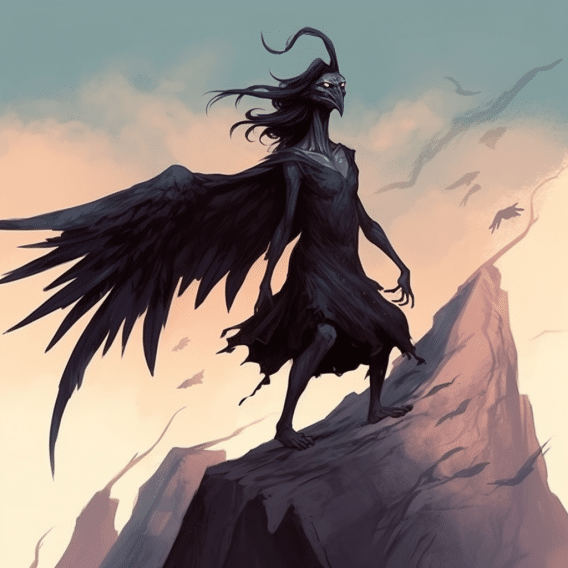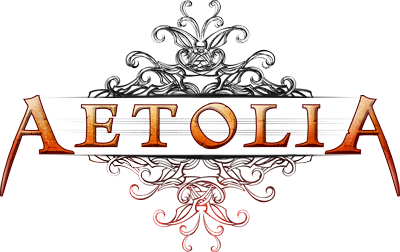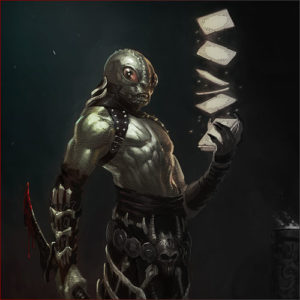The Harpies of Aetolia
The Harpies are a race of humanoid avians, reputed for their raucous demeanour and a penchant for loud chaos.
Having originated from the island of Polyargos, the Harpies were scattered across the continent of Sapience following the island's destruction in the late Midnight Age, leading to a significant increase in their prevalence across all of Sapience. Despite their ill reputation, Harpies boast an intricate society marked by dynamic power structures and a predisposition for cunning manipulation.
Harpies are a cousin race to the similarly winged humanoid Atavians, both of which descend from the Atav. Far from being created by the Gods as a potential shell, mythology instead attributes the appearance of the Harpies as a cruel trick played upon the lofty Atav by the Goddess Khepri.
Harpy populations organise themselves into flocks, each led by the strongest and most cunning amongst them. These societies are rife with constant power struggles and cunning deceit, with alliances and rivalries shifting like the wind. The current queen, Kru'lax, having reigned for centuries, is possessed of an uncanny insight into her people's power dynamics, allowing her to ensure her long rule through astute manipulation of Harpy flocks, inciting discord amongst the myriad factions to maintain her position.
Despite this apparent lack of cohesion in their society, Harpies place a high value on their communal bonds. They communicate through a cacophony of loud squawks and high-pitched screeches, taking delight both in the ensuing chaos, and the discomfort of any that hear them.

Harpy Racial Skills
- Flight
- Nesting (Level 25)
- Selfishness (Level 50)
- Shrieking (Level 75)
Base Statistics & Advantages
- Strength: 11
- Dexterity: 16
- Intelligence: 13
- Constitution: 13
Ready to play a Harpy?
Create your character and play for free today - no download required!
Physical Traits
Eyes: Primarily amber and yellow, sometimes brown. Never blue.
Size: 4 - 5 feet / 1.2 - 1.5 meters.
Nose: Beak-like.
Hands/Feet: Both end in large, twisted talons. Extremely strong grips useful for hooking man-prey.
Skin: Tough and rugged, adorned with an array of flaps and folds. Colours range from dirty browns to off-whites and greys. Often motley, thick hide broken up by patches of feathers.
Wings: Large, and often scarred or discolored from scrapping with other Harpies.
Overall, Harpies tend to look far more avian than their Atavian cousins, usually described as looking like large carrion birds with a Human woman's chest and torso. They often slouch or walk with a slight crouch to mislead others on their height - a trait used to surprise enemies. Most Harpies object to bathing and take pride in their filth, but some of those that have spread out into the lands have taken up the practice - usually just to forestall the complaints of their fellow citizens.
Harpies are either female or non-binary in terms of sex. Trans males are present but are a rarity within the Harpy population.
Cultural Traits
Harpy culture revolves around loud displays of strength and tenacity, and they are highly territorial. They engage in "peacocking" - exaggerated displays of prowess or bravado to mask their vulnerabilities. This is a survival tactic, as any sign of weakness could incite bullying or aggression from other Harpies. The louder and more assertive a Harpy is, the more respect they garner in their community.
Their love for noise and commotion extends into their recreational activities as well, taking delight in creating havoc and often indulging in activities that involve a high level of noise and chaos. Their humour is often coarse, crass, and contains a particular fondness for mockery and jest.
Harpies prefer to live in places that are defensible and hard to reach, such as mountains, cliffs, and treetops. They nest, lay eggs, and never give birth to non-Harpies.
Harpies engage in a culture based around conquest and raiding weaker villages or communities, which also doubles as the most common form of continuing their species.
























